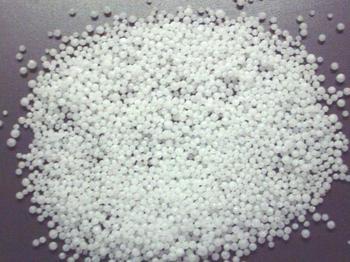 The international urea market remained sluggish last week, with limited trading activity and a clear downward trend in prices. Sellers were quick to offload short-term supplies, while buyers remained cautious, only making purchases at extremely low levels. With Easter holidays affecting Latin American buyers, many have paused their buying activities, further contributing to the weak demand.
Currently, the offshore urea FOB price from Yuzhki Port has dropped to $380 per ton, according to the latest data from NF. Meanwhile, urea prices in the Baltic Sea have fallen by $10 compared to earlier in the week, although shipping challenges due to freezing conditions continue to add uncertainty and increase costs. With no positive factors supporting the market, it looks like urea prices will keep falling in April.
Egyptian producer Mopco recently attempted to sell 25,000 tons of large-grain urea but failed to attract acceptable bids. No buyer was willing to take the cargo at prices above $400. Even if the price is slightly higher than $400, traders would only purchase a small portion and at a discount of $20 compared to March shipments. Two other Egyptian producers are expected to offer their April production soon, and it's anticipated that the FOB price could be below $400.
In the Middle East, the price of large granular urea has also declined, and in Southeast Asia, the FOB price has fallen below $400. In the U.S., procurement activity has been slowed by adverse weather conditions. On March 28, the U.S. Department of Agriculture revised its corn acreage forecast to 97.3 million acres, matching market expectations. However, persistent cold and wet weather could lead farmers to abandon corn planting in favor of soybeans, which would reduce the demand for nitrogen-based fertilizers.
On Thursday, after the USDA reported a 6% increase in corn inventories to 7%, corn prices began to fall. This development may signal lower crop prices, which could impact fertilizer demand in the coming months.
While this week’s purchasing activities from Latin American buyers might provide some temporary support to small granular urea prices, the Asian market remains slow. It is expected that large granular urea prices will continue to weaken in the near term. Overall, the urea market is under significant pressure, with weak demand, oversupply concerns, and ongoing logistical issues all contributing to the downward trend.
The international urea market remained sluggish last week, with limited trading activity and a clear downward trend in prices. Sellers were quick to offload short-term supplies, while buyers remained cautious, only making purchases at extremely low levels. With Easter holidays affecting Latin American buyers, many have paused their buying activities, further contributing to the weak demand.
Currently, the offshore urea FOB price from Yuzhki Port has dropped to $380 per ton, according to the latest data from NF. Meanwhile, urea prices in the Baltic Sea have fallen by $10 compared to earlier in the week, although shipping challenges due to freezing conditions continue to add uncertainty and increase costs. With no positive factors supporting the market, it looks like urea prices will keep falling in April.
Egyptian producer Mopco recently attempted to sell 25,000 tons of large-grain urea but failed to attract acceptable bids. No buyer was willing to take the cargo at prices above $400. Even if the price is slightly higher than $400, traders would only purchase a small portion and at a discount of $20 compared to March shipments. Two other Egyptian producers are expected to offer their April production soon, and it's anticipated that the FOB price could be below $400.
In the Middle East, the price of large granular urea has also declined, and in Southeast Asia, the FOB price has fallen below $400. In the U.S., procurement activity has been slowed by adverse weather conditions. On March 28, the U.S. Department of Agriculture revised its corn acreage forecast to 97.3 million acres, matching market expectations. However, persistent cold and wet weather could lead farmers to abandon corn planting in favor of soybeans, which would reduce the demand for nitrogen-based fertilizers.
On Thursday, after the USDA reported a 6% increase in corn inventories to 7%, corn prices began to fall. This development may signal lower crop prices, which could impact fertilizer demand in the coming months.
While this week’s purchasing activities from Latin American buyers might provide some temporary support to small granular urea prices, the Asian market remains slow. It is expected that large granular urea prices will continue to weaken in the near term. Overall, the urea market is under significant pressure, with weak demand, oversupply concerns, and ongoing logistical issues all contributing to the downward trend.
Cold extrusion is a manufacturing process in which a metal or alloy is forced through a die to create a desired shape or form. This process is typically performed at room temperature, hence the name "cold" extrusion.
A cold extrusion Hydraulic Tool is a specialized tool used to perform cold extrusion processes. It typically consists of a hydraulic press or machine that applies high pressure to force the metal or alloy through the die. The tool may also include additional components such as a die holder, die set, and ejector system.
The hydraulic system of the tool provides the necessary force to deform the metal or alloy and shape it according to the die's specifications. The pressure is applied gradually and evenly to ensure a uniform extrusion without causing any damage to the material.
Cold extrusion hydraulic tools are commonly used in various industries such as automotive, aerospace, and construction. They are used to produce complex shapes and components with high precision and strength. Some examples of products made using cold extrusion include shafts, tubes, rods, and various structural components.
Overall, cold extrusion hydraulic tools are essential in the manufacturing process of many metal and alloy products, providing a cost-effective and efficient method of producing high-quality components.
Cold Extrusion Hydraulic Tool,Open Seam Bushing Installation Puller,Open Seam Bushing Mount Puller,Cold Extrusion Hole Strengthening Tool
Yantai Dongyue Hydraulic Technology Co., Ltd , https://www.deeleap.com